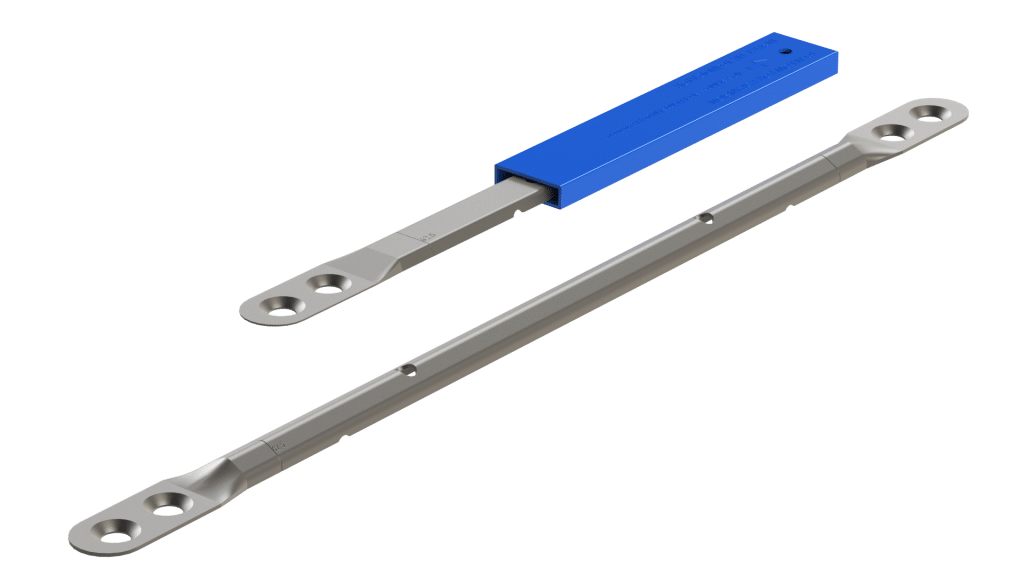In high-rise construction, every component plays a crucial role in ensuring structural integrity and safety. Among these, wall ties stand out as unsung heroes, quietly but effectively connecting the inner and outer layers of a building’s walls. Noor Haddad, Specification & Design Manager, delves deeper into what wall ties are and why they hold such significance in the construction of high-rise buildings.
What are Wall Ties?
In their simplest form, wall ties are an essential element in the stability of a masonry panel. They are used to transfer imposed loads applied to the panel back to a primary structure or another masonry panel. These loads could be in a manner of forms, including compression from wind pressure upon a panel, tension from wind suction upon a panel, as well as shear between two masonry panels at a vertical movement joint, for instance.
The primary form involves the masonry being tied back to a primary structure or inner leaf of a façade, allowing the transfer of forces, such as wind or crowd loading, back into the building. They are there to prevent collapse or deformation of the outer skin.
Another function of a tie may be to transfer load across a movement joint, whilst also allowing for in-plane expansion and contraction of the masonry panel. In some forms, wall tie systems can be utilised in buildings with excessive values of differential movement between the inner and outer leaf, and usually consist of a channel system or a specially designed timber tie, to give an example.
Importance of Wall Ties in High-Rise Construction
In the context of high-rise construction, the role of wall ties becomes even more critical. Insufficient or poorly-installed wall ties can lead to severe issues, including damp penetration, masonry cracks, or even the collapse of the outer masonry panel.
Here’s why:
- Structural Stability: High-rise buildings are subject to large, imposed forces, including wind and crowd loading. Wall ties help distribute these forces evenly across the building’s structure, ensuring stability and minimising the risk of structural failure.
- Preventing Differential Movement: Differential movement, where one part of the building moves differently from another, can lead to cracking and structural damage. Wall ties systems such as brick tie channels can help mitigate this by anchoring the outer and inner walls together, while allowing the outer masonry to expand and contract vertically.
- Enhancing Moisture Resistance: In the UK, where inclement weather is a frequent occurrence, buildings must withstand heavy rain, snow, and strong winds. If any moisture permeates into the cavity, wall ties must ensure that water is not carried to the internal leaf of the building. This is commonly completed by a drip detail within the tie, or a bespoke formed section designed to shed and water that may begin to track across the cavity.
- Compliance with Building Regulations: Building regulations in the UK mandate the use of appropriate wall ties to ensure the structural integrity and safety of high-rise buildings. Adhering to these regulations is paramount for developers and contractors to obtain necessary approvals and certifications.
- Longevity and Durability: High-rise buildings are long-term investments, designed to stand tall for decades. Wall ties, when properly installed and maintained, contribute to the longevity and durability of the structure, reducing the need for costly repairs or renovations down the line.
Challenges and Innovations
While wall ties play a crucial role in high-rise construction, they are not without challenges. Corrosion, thermal bridging, and inadequate installation are among the issues that can compromise their effectiveness. At ACS, we have a wide range of wall ties, and our Research and Development team are constantly developing new ideas around materials science, construction techniques, and raising the bar for both performance and sustainability.
Want to learn more about wall ties? Visit the Wall Tie section of our website, or to learn about Restraint Ties and Fixings join our next ACS CPD on the topic.
Article originally published on 29th April 2024
